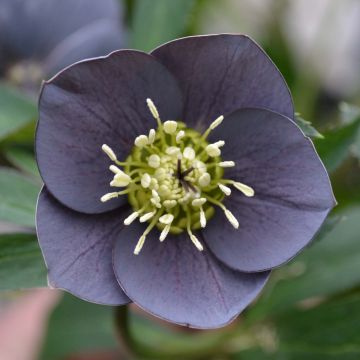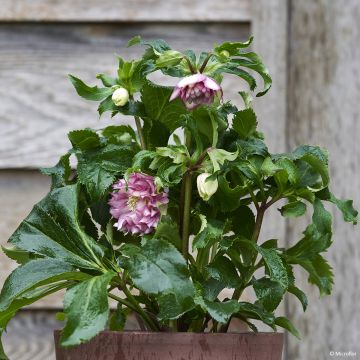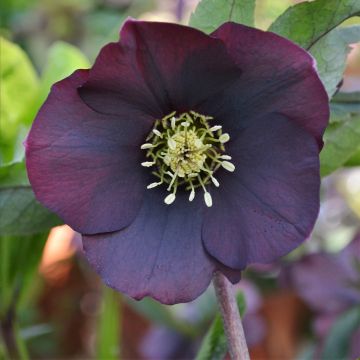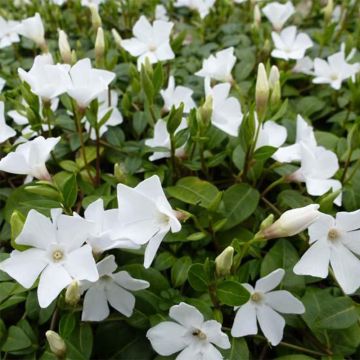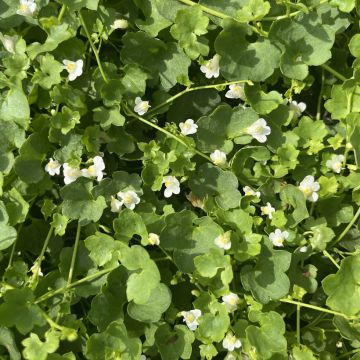

Helleborus HGC Leona


Helleborus HGC Leona


Helleborus HGC Leona
Helleborus HGC Leona
Helleborus x lemperii HGC® Leona
Christmas Rose, Hybrid Hellebore
Planted upon reception in November 2022, it begins a beautiful flowering in mid-January 2023, very similar to the photo on the website. It is highly decorative during the winter months.
Jean-Bernard, 24/01/2023
Special offer!
Receive a €20 voucher for any order over €90 (excluding delivery costs, credit notes, and plastic-free options)!
1- Add your favorite plants to your cart.
2- Once you have reached €90, confirm your order (you can even choose the delivery date!).
3- As soon as your order is shipped, you will receive an email containing your voucher code, valid for 3 months (90 days).
Your voucher is unique and can only be used once, for any order with a minimum value of €20, excluding delivery costs.
Can be combined with other current offers, non-divisible and non-refundable.
Why not try an alternative variety in stock?
View all →This plant carries a 12 months recovery warranty
More information
We guarantee the quality of our plants for a full growing cycle, and will replace at our expense any plant that fails to recover under normal climatic and planting conditions.
Would this plant suit my garden?
Set up your Plantfit profile →
Description
Leona is part of a collection of hybrids obtained through cross-breeding between the Christmas Rose and another species of Hellebore. This variety offers a long-lasting flowering period, starting from early December. This compact perennial, measuring about forty centimetres in all directions, produces large dark red flowers with a yellow stamen heart for several months, until spring. These beautiful flowers stand out above the dark green foliage of beautifully cut leaves which are decorative all year round. this hardy Hellebore can be grown in pots as well as in garden beds where it should be placed in a shaded spot, in moist soil.
Hellebore is a member of the Ranunculaceae family, which includes around sixty genera and about 2500 species. Many of them are poisonous plants containing substances which are toxic if ingested, a natural protection against herbivores. Despite this, they are valuable plants in the garden, as many genera are highly ornamental thanks to their remarkable flowering. The Helleborus genus includes about twenty species, some of which have been cross-bred to create new plants. Leona is a hybrid obtained through cross-breeding between H. niger, the Christmas Rose, and H. x hybridus, a cross-breeding considered impossible until a few years ago. The German company Heuger, located in Glandorf, Lower Saxony, distinguished itself by launching the HGC range (Helleborus Gold Collection), characterized by good cold resistance, particularly large flowers carried by sturdy stems, a long flowering period, and good suitability for pot cultivation.
All these characteristics can be found in Leona, which stands out with its very elegant, large single dark red flowers with 5 petals of the highest quality, enhanced by yellow stamens that adorn the centre of the wide corolla. The first flowers appear in early December and the flower buds continue until spring, in March-April. These beautiful flowers not only look stunning in the garden, but also make magnificent winter bouquets. Carried by robust stems, the flowers rise above the dark foliage, which serves as a backdrop, and are clearly visible from afar. The large floral corollas open vertically, as is the case with most Hellebore varieties. They can even slightly tilt downwards to let water slide off like an umbrella, preventing water accumulation in the centre, which could cause rotting. The foliage consists of palmate, slightly serrated basal, dark green and shiny evergreen leaves, which actually live for only 8 months and are regularly replaced by new leaves. Their sculptural shape is particularly decorative throughout the year, forming a compact clump about 45 cm (18in) in height and width.
Hellebore H.G.C Leona will make a superb flowering pot, and you can plant it in a container along with other evergreen plants: dwarf conifers, small-growing ivy... When planted in the ground, Hellebore does not like to be moved once established, and young shoots sometimes take time to flower. Therefore, make sure to choose the right location and take care not to dig the nearby soil, as it could damage the roots. It will thrive under a leafy tree, which allows winter sunlight to pass through but protects it from summer sun. You can also plant it in a shadier spot, as this Hellebore will do well there. Resistant to temperatures as low as -23°C (-9.4°F), it is a relatively easy plant to grow.
Hellebores are the kings of winter with their single or double flowers in various colours: white, green, pink, red, purple, yellow, solid or bicoloured... You can take advantage of the dark red colour of Leona's flowers to associate it with light-coloured varieties or with other species that appreciate shade and moisture to create a diverse flower bed. You can choose from the range of Tiarellas, another genus of perennials that are well suited to shady conditions that flower abundantly in spring with delicate white spikes. Also consider adding some evergreen plants with decorative foliage, such as Euonymus japonicus White Spire, a small Spindle tree that will form a column of leaves generously variegated with white.
Report an error about the product description
Helleborus HGC Leona in pictures






Flowering
Foliage
Plant habit
Safety measures
Botanical data
Helleborus
x lemperii
HGC® Leona
Ranunculaceae
Christmas Rose, Hybrid Hellebore
Cultivar or hybrid
ingestion
Cette plante est toxique si elle est ingérée volontairement ou involontairement.
Ne la plantez pas là où de jeunes enfants peuvent évoluer, et lavez-vous les mains après l'avoir manipulée.
Pensez à conserver l'étiquette de la plante, à la photographier ou à noter son nom, afin de faciliter le travail des professionnels de santé.
Davantage d'informations sur https://plantes-risque.info
Planting and care
Hellebore grows in any deep, rich, light or clayey soil, even limestone, in partial or light shade, sheltered from cold winds. Care should be taken to avoid direct sunlight during the hottest hours. This perennial should be planted from early autumn to spring, avoiding frost. It thrives in deeply worked soil mixed with some organic matter. Water the plants well and add a layer of mulch 2 to 5 cm (1 to 2in) thick. Ensure a planting distance of 30 to 40 cm (12 to 16in) between each plant to promote their development. Hellebore does not like stagnant water, as it may cause rotting. From the second year after planting, feed in February and then in the middle of summer, when the plant produces new roots and initiates future flower buds. Use organic fertilizers containing equal amounts of potassium and nitrogen to avoid creating an imbalance.
The crowns should not completely dry out in summer. Hellebores can be affected by black spot, transmitted by aphids. Remove the stained leaves when the flower buds appear. Remove faded flowers after the seeds fall. They can also suffer from grey rot or die from collar rot due to poor growing conditions, in excessively moist situations.
On a balcony or terrace, plant them in pots that are significantly larger than they are, as they need space to develop their root system. This hardy hellebore can withstand temperatures as low as -23 °C (-9,4°F) without suffering, allowing it to adapt to all regions. Hellebores are undemanding plants that can live for many years without requiring much care.
Planting period
Intended location
Care
-
, onOrder confirmed
Reply from on Promesse de fleurs
Similar products
Haven't found what you were looking for?
Hardiness is the lowest winter temperature a plant can endure without suffering serious damage or even dying. However, hardiness is affected by location (a sheltered area, such as a patio), protection (winter cover) and soil type (hardiness is improved by well-drained soil).

Photo Sharing Terms & Conditions
In order to encourage gardeners to interact and share their experiences, Promesse de fleurs offers various media enabling content to be uploaded onto its Site - in particular via the ‘Photo sharing’ module.
The User agrees to refrain from:
- Posting any content that is illegal, prejudicial, insulting, racist, inciteful to hatred, revisionist, contrary to public decency, that infringes on privacy or on the privacy rights of third parties, in particular the publicity rights of persons and goods, intellectual property rights, or the right to privacy.
- Submitting content on behalf of a third party;
- Impersonate the identity of a third party and/or publish any personal information about a third party;
In general, the User undertakes to refrain from any unethical behaviour.
All Content (in particular text, comments, files, images, photos, videos, creative works, etc.), which may be subject to property or intellectual property rights, image or other private rights, shall remain the property of the User, subject to the limited rights granted by the terms of the licence granted by Promesse de fleurs as stated below. Users are at liberty to publish or not to publish such Content on the Site, notably via the ‘Photo Sharing’ facility, and accept that this Content shall be made public and freely accessible, notably on the Internet.
Users further acknowledge, undertake to have ,and guarantee that they hold all necessary rights and permissions to publish such material on the Site, in particular with regard to the legislation in force pertaining to any privacy, property, intellectual property, image, or contractual rights, or rights of any other nature. By publishing such Content on the Site, Users acknowledge accepting full liability as publishers of the Content within the meaning of the law, and grant Promesse de fleurs, free of charge, an inclusive, worldwide licence for the said Content for the entire duration of its publication, including all reproduction, representation, up/downloading, displaying, performing, transmission, and storage rights.
Users also grant permission for their name to be linked to the Content and accept that this link may not always be made available.
By engaging in posting material, Users consent to their Content becoming automatically accessible on the Internet, in particular on other sites and/or blogs and/or web pages of the Promesse de fleurs site, including in particular social pages and the Promesse de fleurs catalogue.
Users may secure the removal of entrusted content free of charge by issuing a simple request via our contact form.
The flowering period indicated on our website applies to countries and regions located in USDA zone 8 (France, the United Kingdom, Ireland, the Netherlands, etc.)
It will vary according to where you live:
- In zones 9 to 10 (Italy, Spain, Greece, etc.), flowering will occur about 2 to 4 weeks earlier.
- In zones 6 to 7 (Germany, Poland, Slovenia, and lower mountainous regions), flowering will be delayed by 2 to 3 weeks.
- In zone 5 (Central Europe, Scandinavia), blooming will be delayed by 3 to 5 weeks.
In temperate climates, pruning of spring-flowering shrubs (forsythia, spireas, etc.) should be done just after flowering.
Pruning of summer-flowering shrubs (Indian Lilac, Perovskia, etc.) can be done in winter or spring.
In cold regions as well as with frost-sensitive plants, avoid pruning too early when severe frosts may still occur.
The planting period indicated on our website applies to countries and regions located in USDA zone 8 (France, United Kingdom, Ireland, Netherlands).
It will vary according to where you live:
- In Mediterranean zones (Marseille, Madrid, Milan, etc.), autumn and winter are the best planting periods.
- In continental zones (Strasbourg, Munich, Vienna, etc.), delay planting by 2 to 3 weeks in spring and bring it forward by 2 to 4 weeks in autumn.
- In mountainous regions (the Alps, Pyrenees, Carpathians, etc.), it is best to plant in late spring (May-June) or late summer (August-September).
The harvesting period indicated on our website applies to countries and regions in USDA zone 8 (France, England, Ireland, the Netherlands).
In colder areas (Scandinavia, Poland, Austria...) fruit and vegetable harvests are likely to be delayed by 3-4 weeks.
In warmer areas (Italy, Spain, Greece, etc.), harvesting will probably take place earlier, depending on weather conditions.
The sowing periods indicated on our website apply to countries and regions within USDA Zone 8 (France, UK, Ireland, Netherlands).
In colder areas (Scandinavia, Poland, Austria...), delay any outdoor sowing by 3-4 weeks, or sow under glass.
In warmer climes (Italy, Spain, Greece, etc.), bring outdoor sowing forward by a few weeks.






























